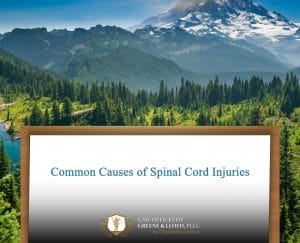## Understanding the Essentials of Aggressive Drivers Safety
Aggressive drivers safety refers to a set of principles and practices designed to protect motorists from the dangers posed by aggressive driving behavior. Aggressive driving often manifests as speeding, tailgating, sudden lane changes, and other reckless actions behind the wheel that threaten the safety of everyone on the road. Understanding the dynamics of aggressive driving and how to protect oneself is critical, particularly for those who frequently drive in busy urban or rural areas across Washington State. By adopting certain precautions and awareness strategies, drivers can significantly reduce their risk of falling victim to aggressive drivers.
The legal implications of aggressive driving are underscored by the serious consequences it can bring about, including accidents, injuries, and even fatalities. Washington State has specific regulations that categorize aggressive driving behaviors and establish penalties for offenders. By promoting aggressive drivers safety, we can contribute to a cultural shift toward more responsible driving habits, leading to safer roadways for all. This approach is not merely about legal implications but rather about fostering broader community values that prioritize safety.
Essentially, aggressive drivers safety encompasses not only the personal responsibility of each driver but also reflects a collective societal commitment to ensuring that everyone can travel safely. It emphasizes the need for education, awareness, and proactive measures that individuals can undertake to protect themselves and their fellow drivers from aggressive driving behaviors.
## The Importance of Addressing Aggressive Driving Behavior
Aggressive driving is a pressing issue that escalates road risks and endangers lives. Every year, thousands of accidents are attributable to aggressive driving. Acknowledging this reality is crucial for several reasons. First, aggressive drivers can create highly volatile situations that stem from mere frustration or impatience. This behavior can quickly escalate into road rage, which presents immediate dangers not only to the aggressive driver but also to innocent motorists, passengers, pedestrians, and cyclists.
In addition to the physical risks associated with aggressive driving, there are significant legal ramifications. In Washington State, aggressive driving can be treated as a criminal offense that carries harsh penalties, including fines, points on a driving record, and even jail time in extreme cases. Understanding these legal ramifications is vital for individuals to comprehend the far-reaching consequences of their actions behind the wheel, both for themselves and their potential victims.
Moreover, addressing aggressive driving behavior contributes to a culture of road safety. When the community collectively acknowledges and reacts to aggressive driving, it fosters a more respectful and courteous driving environment. Through education and awareness campaigns, law enforcement agencies, legislators, and legal professionals can work together to tackle this societal issue and elevate the standard for safe driving practices across Washington.
## Legal Context of Aggressive Drivers Safety
The legal framework surrounding aggressive driving is essential for understanding the tools available to protect oneself and hold aggressive drivers accountable. In Washington State, aggressive driving can be classified as a traffic violation or even a criminal offense depending on the severity of the behavior. Existing laws define aggressive driving as a combination of illegal actions such as exceeding speed limits, weaving in and out of traffic, and tailgating, which significantly increase the risk of accidents.
Victims of aggressive driving have legal remedies at their disposal. Upon experiencing an incident involving an aggressive driver, individuals may choose to file a complaint with law enforcement, seek compensation through insurance claims, or consider civil litigation in cases of personal injury or property damage. Engaging the legal system often requires an understanding of both state and local laws, making it vital for individuals to know their rights and available avenues for recourse.
Furthermore, victims of aggressive driving can play an active role in reporting and documenting incidents, aiding local law enforcement in identifying patterns and addressing aggressive drivers as part of ongoing safety initiatives. Legal context precedes personal responsibility, thus equipping individuals with the tools and knowledge they need to navigate their rights effectively.
## Real-Life Instances of Aggressive Driving
The implications of aggressive driving are brought to light through real-world incidents that leave lasting impacts on individuals, families, and communities. For instance, consider a case in Washington State where a motorist was tailgated at high speeds on a busy freeway. The aggressive driver, fueled by road rage, attempted to intimidate the more cautious driver, resulting in a collision that caused significant destruction and injury. Unfortunately, scenarios like this unfold daily across the nation, emphasizing the potential consequences of aggressive behaviors on the road.
Moreover, the legal consequences of aggressive driving can also send ripples through the community. When a high-profile incident of aggressive driving leads to serious injury or death, it raises public awareness and often leads to calls for stricter law enforcement and enhanced driving safety education. These events can spark conversations regarding legislative changes, community programs, and other preventive measures aimed at reducing aggressive driving rates.
The stories of victims can inspire collective action within the community. Advocacy groups often emerge in response to such tragedies, focusing their efforts on raising awareness about aggressive drivers and promoting safety initiatives. By sharing these narratives and raising awareness around aggressive driving behavior, communities can foster a stronger understanding of the issue and work together toward effective solutions.
## Effective Strategies for Enhanced Safety Against Aggressive Drivers
When navigating the streets, proactive measures can significantly enhance safety against aggressive drivers. One essential strategy is maintaining a calm and composed demeanor while driving, providing a buffer against the irritations that may provoke aggressive drivers. Remaining patient helps to avoid escalating any situation, as responding to aggressiveness with frustration can lead to a dangerous cycle.
Another beneficial approach is to remain aware of one’s surroundings. Understanding traffic patterns, being vigilant, and anticipating potentially aggressive behavior from other drivers can equip individuals to adapt and react more safely. For instance, keeping an appropriate distance from vehicles that exhibit aggressive tendencies can mitigate risk and provide ample reaction time should an incident arise.
Additionally, it is recommended to avoid engaging with aggressive drivers. This includes refraining from eye contact, using hand gestures, or retaliating with aggressive maneuvers. Instead, remaining focused on the road and maintaining a safe speed and distance can help de-escalate a potentially volatile encounter, minimizing the overall chances of confrontations.
## Pitfalls to Avoid When Dealing with Aggressive Drivers
When faced with aggressive drivers, certain common mistakes can exacerbate the risk of accidents and misunderstandings. One significant misstep is allowing oneself to become emotionally reactive. Engaging in a duel of egos with an aggressive driver can lead to poor decision-making and dangerous driving behavior, increasing the chances of an accident. By not succumbing to emotional triggers, drivers can maintain a more secure position.
Another common pitfall involves misjudging the situation or underestimating an aggressive driver’s intentions. This can result in taking risks, such as attempting to overtake an aggressive driver without fully assessing the surroundings. The unpredictability of aggressive behavior means that such assessments can lead to serious consequences. Staying aware and avoiding risky maneuvers is crucial.
Moreover, it is vital to avoid isolating oneself after an encounter with an aggressive driver. Drivers should feel empowered to document the incident, take photographs, and report to law enforcement if necessary. Failing to do so can hinder any potential claims or legal recourse in the future, limiting avenues of support should an incident escalate. Being diligent and proactive protects not only the initial driver but encourages accountability in aggressive drivers.
## When Seeking Legal Advice Becomes Essential
Understanding when to consult an attorney in relation to aggressive drivers is crucial for ensuring the best possible outcome following an incident. If an aggressive driving confrontation leads to a crash, injuries, or property damage, seeking legal counsel can provide invaluable support in navigating the complexities of the legal system. An attorney can help evaluate the circumstances surrounding the incident, determine liability, and ensure that all necessary evidence is collected effectively.
Additionally, if the aggressive driver exhibits a pattern of dangerous behavior, consulting with attorneys can hold them accountable and potentially prevent further incidents from harming others. Knowledgeable attorneys can advise on the steps necessary to liaise with law enforcement and pursue civil claims against the aggressive driver for damages sustained.
Furthermore, when individuals find themselves buried in medical bills or facing hardships due to lost wages from an accident with an aggressive driver, legal consultation becomes critical. An informed attorney can help victims explore available compensatory measures, whether through insurance claims or litigation, ensuring that their rights are protected and they receive rightful compensation for their losses.
## The Advantages of Professional Legal Support
Legal representation in cases involving aggressive drivers provides numerous advantages that extend beyond immediate legal recourse. First and foremost, experienced legal professionals can effectively navigate the complexities of the legal system, ensuring that victims understand their rights and the recourse available to them following an incident. Knowledge of local regulations and legal precedents equips attorneys to build strong cases for their clients.
Additionally, having legal representation helps alleviate the burden of personal stress. Following an encounter with an aggressive driver, victims often experience emotional turmoil. A skilled attorney can handle the legal negotiations, insurance communications, and court procedures, allowing individuals to focus on healing without the added pressure of navigating the legal landscape alone.
Furthermore, attorneys can maximize the potential recovery for victims of aggressive driving incidents. Through thorough investigations, they can gather essential evidence, engage expert witnesses, and clearly communicate the extent of damages suffered. This commitment to a comprehensive legal approach often leads to more favorable outcomes for clients, ensuring that they receive the justice and compensation they deserve.
## How Law Offices of Greene & Lloyd, PLLC Can Provide Support
At the Law Offices of Greene & Lloyd, PLLC, a dedicated team is committed to serving Washington State residents impacted by aggressive driving. Their knowledge of local laws and regulations allows for a comprehensive understanding of aggressive driving issues, enabling them to provide unparalleled representation for victims. They recognize that each case requires a personalized approach tailored to address the unique circumstances of each client’s experience.
This firm prioritizes client needs and fosters open lines of communication. Victims can feel confident that their concerns are understood and are met with the utmost professionalism and rigorous advocacy. The attorneys at Greene & Lloyd emphasize not only the legal aspects of each case but also the emotional components involved, ensuring clients receive holistic support throughout the legal process.
Moreover, their commitment extends beyond legal representation. The team actively participates in community efforts to raise awareness about aggressive driving and advocate for stronger safety measures through education and outreach programs. This community engagement aligns their efforts with broader societal goals, reinforcing their role not just as attorneys but as active participants in ensuring the safety of drivers across Washington State.
## Frequently Asked Questions About Aggressive Drivers Safety
## Further Resources For Aggressive Drivers Safety
To bolster knowledge and understanding of aggressive drivers safety, individuals can access a variety of valuable resources. Organizations such as the National Highway Traffic Safety Administration (NHTSA) provide comprehensive information about aggressive driving, including statistics, safety tips, and educational materials designed to empower motorists. Their website offers valuable insights that can be utilized for community outreach, advocacy, and personal education.
Local law enforcement agencies across Washington State also frequently offer seminars, workshops, and community engagement initiatives focused on promoting safe driving behaviors. Attending such events or accessing educational materials from these agencies can provide a wealth of information on how to navigate aggressive drivers’ encounters.
Additionally, traffic safety advocacy groups often develop resources and materials aimed at raising awareness about aggressive driving. These organizations focus on prevention strategies and legislative advocacy, ensuring that the conversation about road safety is reinforced through collaboration and community involvement. Engaging with these resources fosters a better understanding of the implications of aggressive driving and emphasizes the importance of proactive measures to enhance road safety.




